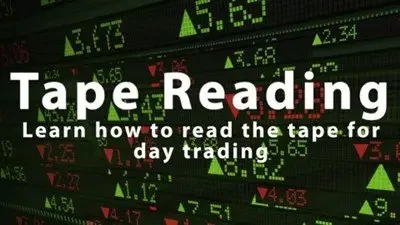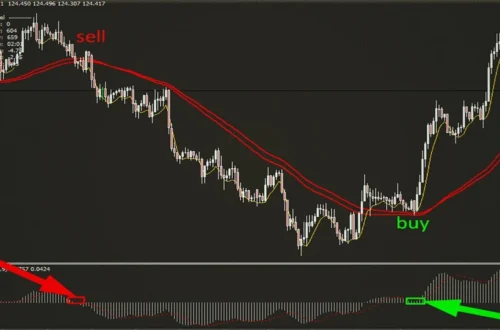Struggling to understand real-time market flow can feel overwhelming for traders. Level 2 data offers detailed information about buy and sell orders that influence the market. This blog will simplify tape reading techniques to help you identify trends and make more informed trades.
Keep reading to enhance your trading knowledge today.
Understanding Level 2 Data
Level 2 data shows detailed information about buy and sell orders in the market. For traders looking to master level 2 tape reading, this data provides crucial insight into supply, demand, and price movements.
Bid and Ask Prices
Bid prices indicate the amount buyers are prepared to pay for a stock. Ask prices represent what sellers expect in exchange for that stock. These two figures represent supply and demand in real-time markets.
The gap between bid and ask prices is referred to as the spread. Narrower spreads often signify strong liquidity, while wider spreads could indicate lower trading activity or increased volatility.
Grasping this concept helps traders assess market sentiment before initiating buy or sell orders.
The bid-ask spread highlights market depth and execution possibilities.
Order Book Depth
Bid and ask prices reflect immediate supply and demand. Order book depth demonstrates all active buy and sell orders at various price levels. It indicates the quantity of shares traders are willing to trade above and below current prices.
Traders rely on market depth to assess interest in a stock. Large clusters on one side may suggest strong resistance or support areas. Rapid changes in order sizes can indicate shifts in sentiment or potential volatility.
Experienced traders observe these details for improved entry points or to foresee sharp price movements.
Key Components of Tape Reading
Tape reading relies on observing essential market data to understand price movements. Traders focus on live activity to interpret supply and demand dynamics.
Time and Sales Data
Time and sales data tracks each transaction as it happens. It includes the price, size, time of execution, and whether it hit the bid or ask. Traders depend on this information to assess market flow and activity levels.
This data assists traders in identifying patterns in volume analysis and price movements. Quick trades at the ask may suggest strong buying interest. Slower transactions at the bid can point to low demand or uncertainty.
Understanding time and sales offers important insights about supply and demand dynamics.
Volume and Price Action
Volume shows the number of shares or contracts traded in the market. Significant volume often indicates strong interest and is essential for confirming price movements. Sharp price moves with limited volume may lack strength, while substantial volume supports trends.
Price action reflects buyers’ and sellers’ behavior as prices move up or down. Sudden spikes in activity can emphasize demand surges or supply increases. Observing both together helps traders identify potential reversals or trend continuations accurately.
Essential Tape Reading Techniques
Master tape reading by concentrating on changes in trading activity. Pay attention to how price and volume work together during significant moments.
Recognizing Patterns
Recognizing patterns in tape reading helps traders understand market flow and predict price movements. Spotting these patterns requires focus on order book activity, volume, and price action.
- Look for repeated buy and sell orders that signal strong market interest in a stock. Consistent large orders at the bid or ask often highlight key support or resistance levels.
- Pay attention to sudden spikes in volume paired with price movement. This can indicate increased activity such as institutional buying or selling.
- Identify price clusters where trades continually occur within a narrow range. These zones may act as consolidation points before a breakout.
- Observe if aggressive buyers lift the ask repeatedly while sellers hesitate at the bid. This behavior often shows bullish sentiment gaining strength.
- Watch for rapid shifts between bids and asks that create a tug-of-war effect. Such volatility can signal indecision or possible trend reversals.
- Spot price stair-stepping where trades ascend or descend steadily over time. This often reflects momentum from either buyers or sellers dominating the market flow.
Understanding these behaviors enhances your ability to interpret market sentiment and analyze order book depth, helping form effective strategies for decoding real-time data.
Decoding Market Sentiment
Understanding patterns sets the stage for interpreting market sentiment. Decoding market sentiment helps traders sense the emotions driving price movements and volume changes.
- Examine buy and sell orders to measure supply and demand. An increase in buying pressure indicates bullish sentiment, while increased selling shows bearish trends.
- Observe order book activity to evaluate market depth. Large orders at specific levels often hint at key resistance or support points.
- Monitor bid-ask spreads for insight into market confidence. Narrow spreads suggest high liquidity, while wider spreads indicate uncertainty or low activity.
- Review volume surges during price action shifts to estimate momentum strength. High volume with rising prices often signals strong buyer interest.
- Keep track of Time and Sales data to watch trades executed in real time. A higher frequency of larger trades can point toward institutional activity.
- Assess clusters of canceled orders on the order book as potential manipulation attempts. These actions may skew market perception temporarily.
- Notice how quickly prices react to news events or economic reports. Rapid movement suggests heightened trader sensitivity or prevailing fear and greed in the market.
- Compare trade sizes across different sessions for behavior shifts among retail versus institutional players. Institutions often execute block trades that shift trends abruptly.
- Focus on price levels repeatedly tested without breaking through over time. This indicates significant sentiment tied to those psychological barriers.
- Pay attention to sudden gaps in the order book as they highlight imbalance areas between buyers and sellers, reflecting evolving sentiment trends actively shaping the flow.
Advanced Tape Reading Strategies
Combine tape reading with price movement to identify highly likely setups. Examine order flow alongside market depth for improved decision-making.
Combining with Technical Indicators
Technical indicators help traders confirm signals from tape reading. They provide additional insights into market flow and price action for making more informed decisions.
- Use moving averages to identify trends alongside order book movements. Monitor short-term and long-term averages for potential crossovers that align with buy or sell orders.
- Apply the Relative Strength Index (RSI) to detect overbought or oversold conditions in combination with trading volume. Look for divergences between RSI and price action during high-speed real-time data.
- Analyze Bollinger Bands to assess market volatility while tracking bid-ask spreads. Focus on moments when price breaks outside the bands as it reflects strong supply or demand shifts.
- Add MACD (Moving Average Convergence Divergence) to observe momentum changes within time and sales data. Focus on histogram shifts to anticipate reversals or continuations in market flow.
- Combine technical support and resistance levels with depth of market data. Use detailed volume analysis near key price zones to confirm breakout or rebound opportunities.
- Implement stochastic oscillators for identifying short-term momentum patterns within tape movements. High readings near resistance may suggest weaker market sentiment.
- Align Fibonacci retracement levels with aggregated buy and sell orders in the order book. Watch these levels closely during retracements following sudden price moves.
- Overlay VWAP (Volume Weighted Average Price) onto intraday charts while studying active trades in the time and sales feed. Compare trade executions near VWAP points to recognize fair value trends.
- Pair average true range (ATR) indicators with execution speed analysis during volatile periods like news releases. High ATR values often indicate sharper movement in price action.
- Cross-reference Ichimoku Cloud signals with real-time depth-of-market data for advanced sentiment reading strategies. Pay attention to cloud thickness, indicating strength of current trends against volume metrics.
Algorithmic Tape Reading
Algorithmic tape reading uses computer programs to analyze real-time data efficiently. It identifies patterns in order flow, price movements, and volume changes. Traders depend on these systems to process large amounts of market information within seconds.
Algorithms can detect changes in supply and demand by analyzing the order book. They monitor bid-ask spreads and emerging trends faster than humans. By combining automation with technical analysis, traders gain more accurate insights into market sentiment and execution speed.
Practical Applications in Trading
Traders use tape reading to improve entry and exit timing in the market. Analyzing real-time data helps them react quickly to price movements.
Entry and Exit Strategies
Entry and exit strategies play a vital role in trading success. Traders can rely on Level 2 data to refine their decisions by analyzing real-time market flow.
- Observe the order book closely to identify large buy or sell orders. These orders can indicate strong support or resistance levels.
- Pay attention to sudden changes in bid and ask prices. Quick shifts may suggest an upcoming price breakout or reversal.
- Conduct volume analysis to validate price action trends. High volume often supports significant price movements, while low volume may indicate weaker trends.
- Review time and sales data for rapid execution of trades at specific price points. This activity could suggest institutional interest or increased market participation.
- Detect supply and demand zones by observing recurring patterns in order book depth. These areas help traders plan precise entry points.
- Prioritize tight bid-ask spreads before entering a trade. Narrow spreads generally reduce costs and enhance trade efficiency.
- Exit trades near key psychological levels such as round numbers or historic highs and lows. These levels often attract high trader activity, influencing market sentiment.
- Incorporate technical analysis tools alongside Level 2 data for confirmation signals on exits or entries. Indicators such as moving averages can improve decision-making accuracy.
- Monitor execution speed during volatile market conditions to minimize slippage on entry or exit orders. Faster speeds offer better control over trade outcomes.
- Stay vigilant for changes in liquidity displayed on the order book moments before placing trades. Low liquidity increases risk during execution, particularly in periods of high volatility.
Managing Volatility
Managing market volatility is crucial for both beginner and advanced traders. It helps make better decisions during rapid price movements and unpredictable conditions.
- Keep a close eye on real-time data to understand sudden changes in market flow or sentiment.
- Apply Volume Analysis to detect spikes that may signal significant price action.
- Observe the order book to track large buy and sell orders influencing market depth.
- Set stop-loss orders to limit potential losses during extreme volatility.
- Adjust position sizes based on current volatility levels to reduce risks effectively.
- Examine bid-ask spreads, as wider spreads often indicate higher market volatility.
- Combine tape reading with technical analysis tools like moving averages for clearer insights into trends and reversals.
Advanced strategies integrate well with technical indicators for more detailed tape-reading results.
Conclusion
Tape reading with Level 2 data gives traders a powerful edge. It reveals real-time market flow and sentiment. By analyzing price action, volume, and the order book, you can make informed decisions.
Practice these techniques to sharpen your trading skills over time. Use them wisely to navigate volatile markets effectively.





